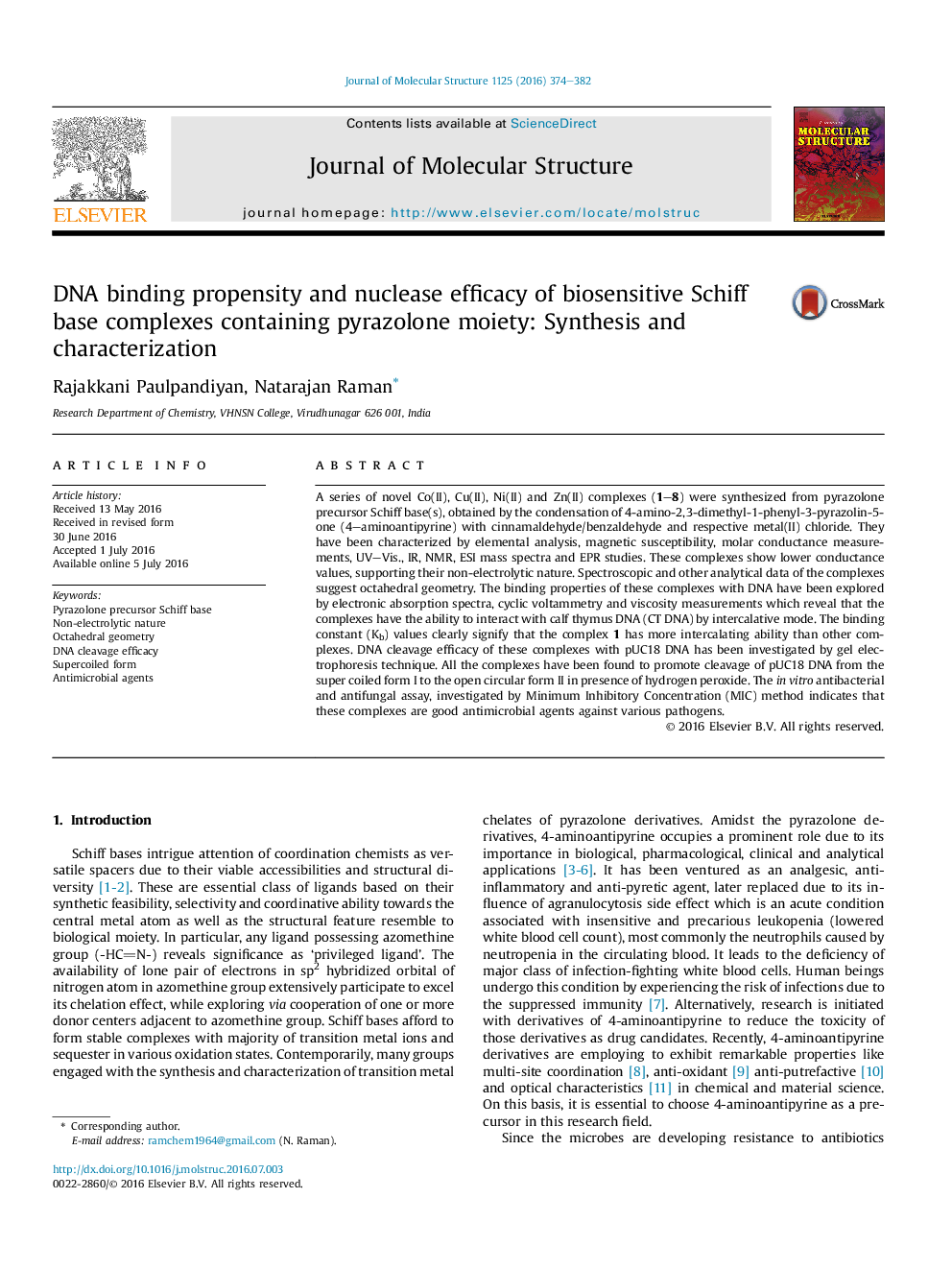| کد مقاله | کد نشریه | سال انتشار | مقاله انگلیسی | نسخه تمام متن |
|---|---|---|---|---|
| 1400951 | 1501692 | 2016 | 9 صفحه PDF | دانلود رایگان |

• Synthesis and characterization of biosensitive pyrazolone precursor complexes.
• Mononuclear and octahedral geometry around the central metal ion.
• Evidence for metallointercalation by in vitro DNA binding studies.
• Higher DNA nuclease efficacy of the complexes than the free ligands.
• Excellent in vitro antimicrobial performance against various pathogens.
A series of novel Co(II), Cu(II), Ni(II) and Zn(II) complexes (1–8) were synthesized from pyrazolone precursor Schiff base(s), obtained by the condensation of 4-amino-2,3-dimethyl-1-phenyl-3-pyrazolin-5-one (4–aminoantipyrine) with cinnamaldehyde/benzaldehyde and respective metal(II) chloride. They have been characterized by elemental analysis, magnetic susceptibility, molar conductance measurements, UV–Vis., IR, NMR, ESI mass spectra and EPR studies. These complexes show lower conductance values, supporting their non-electrolytic nature. Spectroscopic and other analytical data of the complexes suggest octahedral geometry. The binding properties of these complexes with DNA have been explored by electronic absorption spectra, cyclic voltammetry and viscosity measurements which reveal that the complexes have the ability to interact with calf thymus DNA (CT DNA) by intercalative mode. The binding constant (Kb) values clearly signify that the complex 1 has more intercalating ability than other complexes. DNA cleavage efficacy of these complexes with pUC18 DNA has been investigated by gel electrophoresis technique. All the complexes have been found to promote cleavage of pUC18 DNA from the super coiled form I to the open circular form II in presence of hydrogen peroxide. The in vitro antibacterial and antifungal assay, investigated by Minimum Inhibitory Concentration (MIC) method indicates that these complexes are good antimicrobial agents against various pathogens.
Figure optionsDownload as PowerPoint slide
Journal: Journal of Molecular Structure - Volume 1125, 5 December 2016, Pages 374–382